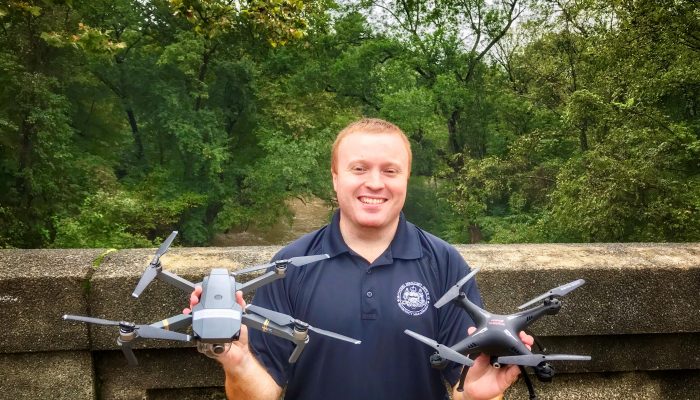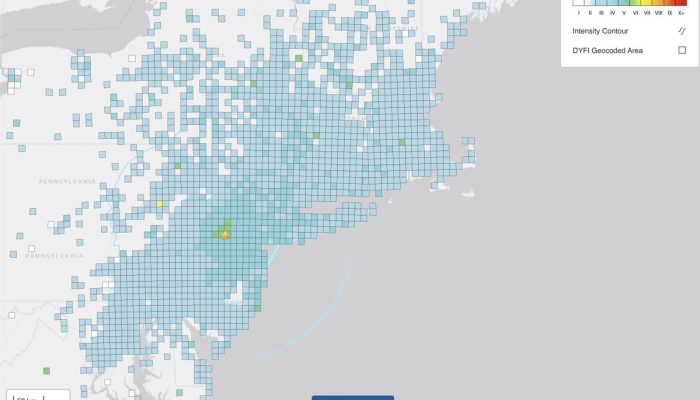By Justin Friend, Regional Integration Center Coordinator, Philadelphia Office of Emergency Management | February 1, 2019
Did you know that multiple sUAS pilots in the same area means more coordination may be needed to fly safely?
It’s true!
Before your flight, coordinate with any nearby drone operators to confirm that your systems will not interrupt the safe operation of their flight. Here are some safe flying tips to keep in mind as our small unmanned aviation system (sUAS) community grows.
- For Current sUAS Aircraft: sUAS aircraft, as well as a variety of other RC aircraft types, share the same allotted frequency pool in many cases. These frequencies are primarily in the 2.4 and 5.8 GHz ranges. Advanced drones operating in this spectrum can frequency hop to help avoid interference and bind the sUAS aircraft with the transmitter, which prevents most transmitter interference issues. Less sophisticated drones in this spectrum may not be bonded to a specific transmitter and are susceptible to major interference if any other craft sUAS aircraft are present.
- New owners should check the documentation that came with the sUAS aircraft and transmitter prior to use. These documents will familiarize the modeler with possible communication issues while learning the steps to the binding process.
- For Older RC Aircraft: Per the Academy of Model Aeronautics (AMA), for RC model operation on 27 MHz, 50 MHz, 53 MHz, 72 MHz, and 75 MHz, it is necessary to maintain strict control of these transmitters at a flying site. Only one transmitter can be operated on any given frequency at any time on each of the above frequencies. Operation of more than one transmitter on the same frequency in the above frequencies will cause loss of model control. Use of pins denoting frequency in use, club flight-line control system (when flying at a club by a modeler), and keeping transmitter antennas collapsed when models are not in flight will help prevent interference issues.
- For First Person View (FPV) Video Feed: FPV allows for live video feeds to be sent from the sUAS Aircraft directly to a video headset worn by the pilot. First Person View commercial pilots and modelers are especially susceptible to cross interference of video feeds due to their need for constant, live video feed and the limited bandwidth in the 5.8 GHz range where most FPV systems operate. However, with a minor change in channel multiple drone operators can operate in the same area without issues. Commercial pilots should check with other FPV pilots in the area prior to your flight to confirm you are operating on channels which are not close enough to cause interference. Recreational modelers should note that at this time they cannot use FPV systems unless at an AMA sponsored event and the pilot trained for the operation with a spotter. If a modeler is at AMA sponsored event, check with event staff and posted signage for guidance on channel usage. Documentation which comes with the video headset and is also available on the vendor’s website will detail how to switch channels.
- Please remember that 5.8 GHz FPV equipment requires an FCC Amateur Radio License to legally operate if the equipment is not already FCC Certified. A majority of equipment for FPV flight is not FCC Certified at this time. The Amateur Radio License test is a 35-question multiple choice exam. The American Radio Relay League offers a free guide and other resources about the licensing Also, the FCC has a site detailing more information on Amateur Radio Service & Licensing here. If you intend to build your own FPV models, obtaining the Amateur Radio License is a worthwhile investment of your time.
- Recreational Flying Best Practices: If flying under recreational rules, be sure to stay up to date on your community’s guidelines of safe flight. A good resource for this information is the Academy of Model Aeronautics, which also offers locations of local flying clubs and insurance for recreational pilots as part of membership.
- Pay special attention to signage at local flying clubs. Some clubs are exclusively 2.4 GHz sites and expect all flight communications to take place in this part of the spectrum. Any AMA Club under this rule will post signage making this clear to all modelers.
Thanks for reading! Fly safe Philly!
Justin Friend works in the Philadelphia Office of Emergency Management’s Regional Integration Center, or the RIC.
Among many other responsibilities, the RIC is a 24/7 watch command that keeps the city’s first-responders informed of important emergency information and Philadelphia’s residents safe through the city’s free mass notification system, ReadyPhiladelphia.
Friend, who has been building and flying model aircraft since grade school, is a licensed Part 107 sUAS operator who has enjoyed flying drones for five years.




